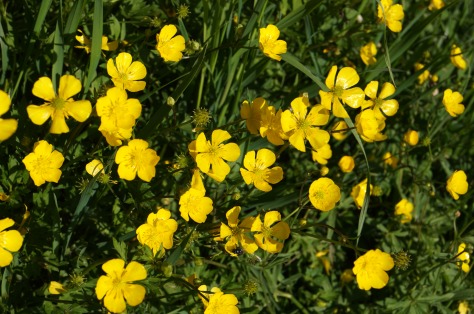What Makes a Good Book Good Enough?
That is one of the things that keeps me busy when I start reading any book whatsoever… Like many other students I was forced to read ”Of Mice and Men” in school as a teenager, and I guess my teacher picked the novel for a few different reasons, among one was the endurable length… I was however thrilled by the way Steinbeck built up his characters and how the story developed. From a few hints on how George and Lennie had to move on again, after something terrible had happened, I realized I was already thinking; What had happened? As a young reader of a classic novel I was thrilled enough to keep reading until the very last page… I also read ”The Pearl” with great interest and without any effort, but for a novel like ”The Grapes of Wrath” it takes 455 pages before you know the end of the story. As a young reader, I did not meet that challenge, but a summer a couple of years ago, during a vaction in California, ”The Grapes of Wrath” was my perfect companion. I drove past the road sign with ”Salinas” and I went to Monterey and the Monterey Bay Aquarium where a section in the Museum describes John Steinbeck’s writing and I was happy to know that in my car, the book was waiting for me to turn the next page and the next…
John Steinbeck received the Nobel Prize in 1962,
”for his realistic and imaginative writings, combining as they do sympathetic humour and keen social perception”
Although ”The Grapes of Wrath” was written in 1938 and first published in 1939, the content is extremely important also in 2018. Migrants today, face the same kind of ignorance and racism as the Okies (people from Oklahoma, moving to California) in Steinbeck’s novel. Migrants both now and then, left for the thought of a better future, filled with hope, but also fear. Their plans and hopes are not always fulfilled…
Describing the process of change in a person’s life, like Steinbeck does in ”The Grapes of Wrath”, is a delicate matter between being true or being pathetic. Neither can you exaggerate too much nor be too shallow.
The novel very closely describes the extremely poor conditions for migrant workers in California in the thirties. Racism, cruelty and violence together with greed seems to be the rule and being from Oklahoma, means being an Okie, which is a stigmatised group at the time. No matter how hard they work, they seem to face very little understanding and empathy from the Californians. The Okies move from one workplace to the other and get less paid for each time they move, so it seems.
Throughout the novel, Steinbeck give descriptions of the surrounding landscape and certain topics of interest. One of the chapters is like a dialogue between a car salesman and an Okie buyer and written with humor, although the underlying message is that many poor Okies were fooled by the car dealers, selling off good cattle or mules in trade for a jalopy. Another such chapter is a very nice description of a few instruments, the harmonica, the guitar and the fiddle and how they blend in together for the coming dance evening, when a certain piece of music is played. That is also where ”Swedes up in Dakota” (p 342) are mentioned, which is fun to read for me as Swedish.
But apart from these humorous chapters, there are also some very critical topics, as when Steinbeck describes how land owners had too much fruit and too much potatoes, too many pigs and instead of giving the food to the extremely poor workers, they poisoned the potatoes, drowned the pigs and drenched the fruit in kerosene, only for the pleasure of not giving it to the starving workers. That is when ”The Grapes of Wrath”(p 349) is uttered…
A good book is a book you never forget…
That is what ”The Grapes of Wrath” was to me…



















